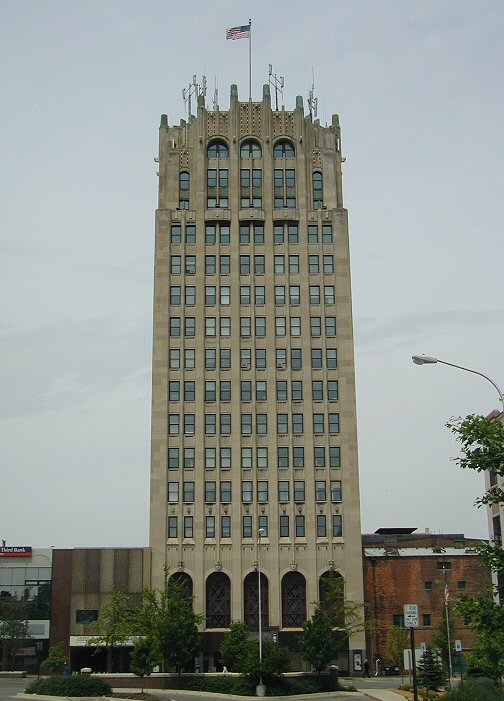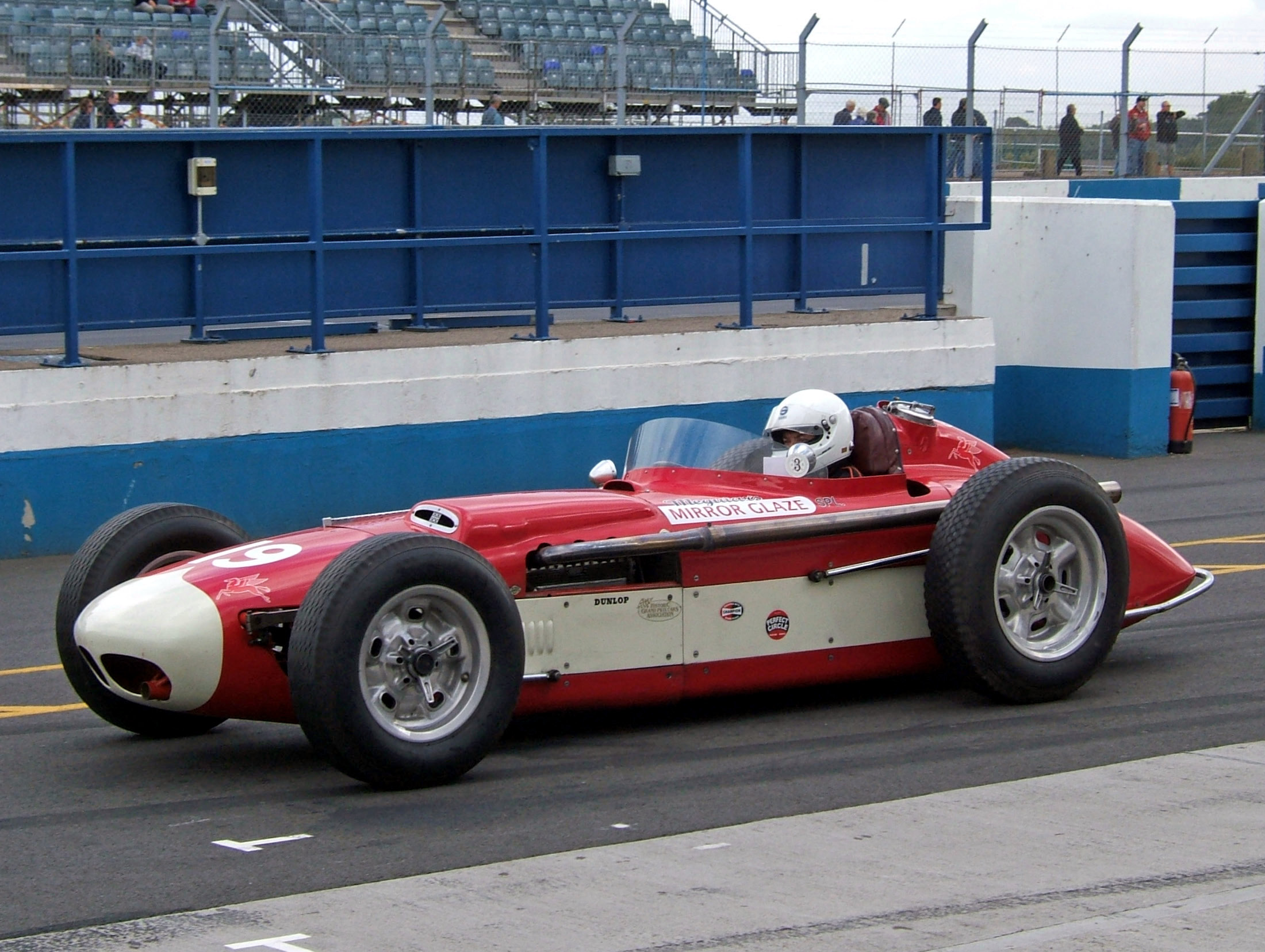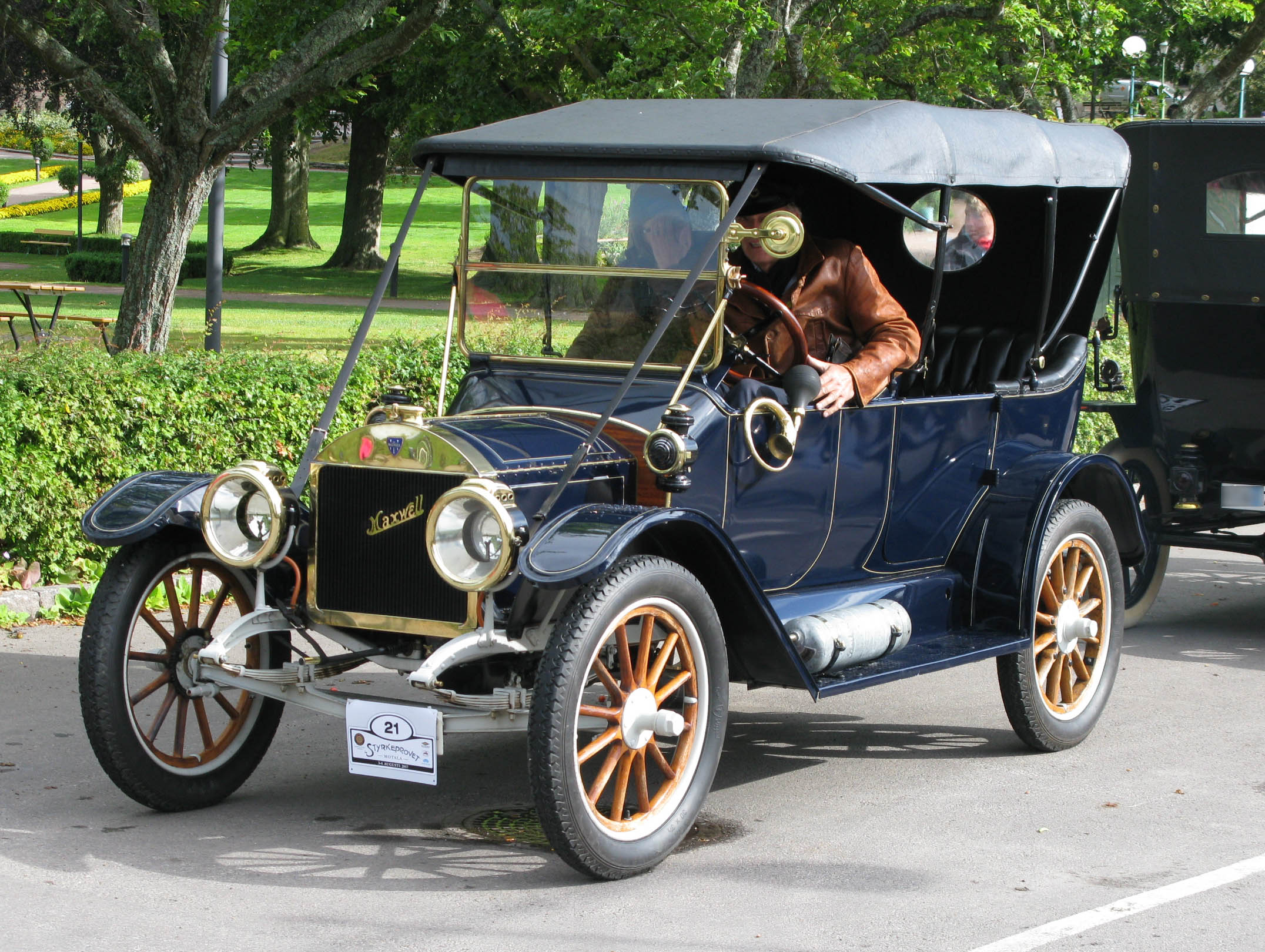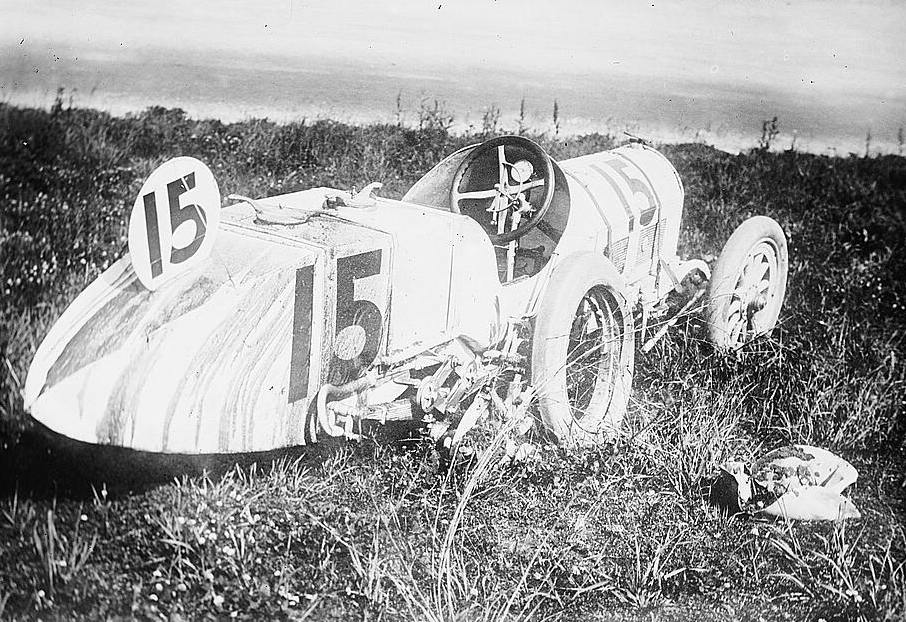|
CVI (automobile)
The C.V.I. was an American automobile manufactured in Jackson, Michigan by the C.V.I. Motor Car Company from 1907 to 1908. The C.V.I. had a common chassis shared between the roadster and touring car models. The car had a four-cylinder, 4.2L engine, with a three-speed selective transmission and shaft drive A drive shaft, driveshaft, driving shaft, tailshaft (Australian English), propeller shaft (prop shaft), or Cardan shaft (after Girolamo Cardano) is a component for transmitting mechanical power, torque, and rotation, usually used to connect .... The cars sold for $4,000 (). Though the car performed well, several investors in the company decided to exit the car business, and the company was reorganized as the Clark-Carter Automobile Company. References * Defunct motor vehicle manufacturers of the United States Motor vehicle manufacturers based in Michigan Defunct manufacturing companies based in Michigan Cars introduced in 1907 Cars discontinued in 1908 ... [...More Info...] [...Related Items...] OR: [Wikipedia] [Google] [Baidu] |
Jackson, Michigan
Jackson is a city in Jackson County, Michigan, United States, and its county seat. The population was 31,309 at the 2020 United States census, 2020 census. Located along Interstate 94 in Michigan, Interstate 94 and U.S. Route 127 in Michigan, U.S. Route 127, it is approximately east of Kalamazoo, Michigan, Kalamazoo, west of Ann Arbor, Michigan, Ann Arbor, west of Detroit, Michigan, Detroit and south of Lansing, Michigan, Lansing. Jackson is the core city of the Jackson Metropolitan statistical area, metropolitan area, which includes all of Jackson County and has a population of 160,248. The city was founded in 1829 and named after President Andrew Jackson. Michigan's first prison, Michigan State Prison (or Jackson State Prison), opened in 1838 and remains in operation. Jackson was historically regarded as the "birthplace of the Republican Party (United States), Republican Party" due to a meeting held there in 1854, during which political figures gathered to oppose the expansi ... [...More Info...] [...Related Items...] OR: [Wikipedia] [Google] [Baidu] |
Chassis
A chassis (, ; plural ''chassis'' from French châssis ) is the load-bearing framework of a manufactured object, which structurally supports the object in its construction and function. An example of a chassis is a vehicle frame, the underpart of a motor vehicle, on which the body is mounted; if the running gear such as wheels and transmission, and sometimes even the driver's seat, are included, then the assembly is described as a rolling chassis. Examples Vehicles In the case of vehicles, the term ''rolling chassis'' means the frame plus the "running gear" like engine, transmission, drive shaft, differential, and suspension. The "rolling chassis" description originated from assembly production when an integrated chassis "rolled on its own tires" just before truck bodies were bolted to the frames near the end of the line. An underbody (sometimes referred to as " coachwork"), which is usually not necessary for the integrity of the structure, is built on the chassis to c ... [...More Info...] [...Related Items...] OR: [Wikipedia] [Google] [Baidu] |
Roadster (automobile)
A roadster (also spider, spyder) is an open two-seat car with emphasis on sporting appearance or character. Initially an American term for a two-seat car with no weather protection, its usage has spread internationally and has evolved to include two-seat convertibles. The roadster was also a style of racing car driven in United States Auto Club (USAC) Championship Racing, including the Indianapolis 500, in the 1950s and 1960s. This type of racing car was superseded by rear-mid-engine cars. Etymology The term "roadster" originates in the United States, where it was used in the 19th century to describe a horse suitable for travelling. By the end of the century, the definition had expanded to include bicycles and tricycles. In 1916, the United States Society of Automobile Engineers defined a roadster as: "an open car seating two or three. It may have additional seats on running boards or in rear deck." Since it has a single row of seats, the main seat for the driver and ... [...More Info...] [...Related Items...] OR: [Wikipedia] [Google] [Baidu] |
Touring Car
Touring car and tourer are both terms for open cars (i.e. cars without a fixed roof). "Touring car" is a style of open car built in the United States which seats four or more people. The style was popular from the early 1900s to the 1930s. The cars used for touring car racing in various series since the 1960s, are unrelated to these early touring cars, despite sharing the same name. "Tourer" is used in British English for any open car. The term "all-weather tourer" was used to describe convertible (car), convertibles (vehicles that could be fully enclosed). A popular version of the tourer was the Torpedo (car), torpedo, with the hood/bonnet line level at the car's waistline giving the car a straight line from front to back. Touring car (U.S.) Design ''Touring car'' was applied in the U.S. to open cars (cars without a fixed roof, for example convertibles) that seat four or more people and have direct entrance to the tonneau (rear passenger area), although it has also been des ... [...More Info...] [...Related Items...] OR: [Wikipedia] [Google] [Baidu] |
Drive Shaft
A drive shaft, driveshaft, driving shaft, tailshaft (Australian English), propeller shaft (prop shaft), or Cardan shaft (after Girolamo Cardano) is a component for transmitting mechanical power (physics), power, torque, and rotation, usually used to connect other components of a drivetrain that cannot be connected directly because of distance or the need to allow for relative movement between them. As torque carriers, drive shafts are subject to torsion (mechanics), torsion and shear stress, equivalent to the difference between the input torque and the load. They must therefore be strong enough to bear the stress, while avoiding too much additional weight as that would in turn increase their inertia. To allow for variations in the alignment and distance between the driving and driven components, drive shafts frequently incorporate one or more universal joints, jaw couplings, or rag joints, and sometimes a Rotating spline, splined joint or prismatic joint. History The term '' ... [...More Info...] [...Related Items...] OR: [Wikipedia] [Google] [Baidu] |
Cutting (automobile)
The Cutting was an American Car, automobile manufactured in Jackson, Michigan by the Clark-Carter Automobile Company from 1909 to 1912,Kimes, Beverly R. (editor), and Clark, Henry A. ''The Standard Catalog of American Cars 1805–1945''. Krause Publications, 1985. . and the Cutting Motor Car Company in 1913. It was made in the same factory as previously produced the CVI (automobile), C.V.I. make. The Cutting was engineered by Charles Cutting, using engines from Milwaukee, Model, and Wisconsin ranging from 30 to 60 hp. Prices ranged from US$1,200 to $1,500. In 1912 the company claimed to have the highest power-to-price ratio of any car at or above the $1,200 price. Cuttings were entered into the 1911 Indianapolis 500, Indianapolis 500 in 1911 and 1912, placing top 15 in the former year but crashing mid-race in the latter. The company failed 1913 due to lack of sufficient initial capital; liabilities exceeded $350,000. It was sold in October 1913 for $30,000 (and assumption ... [...More Info...] [...Related Items...] OR: [Wikipedia] [Google] [Baidu] |
Defunct Motor Vehicle Manufacturers Of The United States
{{Disambiguation ...
Defunct may refer to: * ''Defunct'' (video game), 2014 * Zombie process or defunct process, in Unix-like operating systems See also * * :Former entities * End-of-life product * Obsolescence Obsolescence is the process of becoming antiquated, out of date, old-fashioned, no longer in general use, or no longer useful, or the condition of being in such a state. When used in a biological sense, it means imperfect or rudimentary when comp ... [...More Info...] [...Related Items...] OR: [Wikipedia] [Google] [Baidu] |
Motor Vehicle Manufacturers Based In Michigan
An engine or motor is a machine designed to convert one or more forms of energy into mechanical energy. Available energy sources include potential energy (e.g. energy of the Earth's gravitational field as exploited in hydroelectric power generation), heat energy (e.g. geothermal), chemical energy, electric potential and nuclear energy (from nuclear fission or nuclear fusion). Many of these processes generate heat as an intermediate energy form; thus heat engines have special importance. Some natural processes, such as atmospheric convection cells convert environmental heat into motion (e.g. in the form of rising air currents). Mechanical energy is of particular importance in transportation, but also plays a role in many industrial processes such as cutting, grinding, crushing, and mixing. Mechanical heat engines convert heat into work via various thermodynamic processes. The internal combustion engine is perhaps the most common example of a mechanical heat engine in which hea ... [...More Info...] [...Related Items...] OR: [Wikipedia] [Google] [Baidu] |
Defunct Manufacturing Companies Based In Michigan
{{Disambiguation ...
Defunct may refer to: * ''Defunct'' (video game), 2014 * Zombie process or defunct process, in Unix-like operating systems See also * * :Former entities * End-of-life product * Obsolescence Obsolescence is the process of becoming antiquated, out of date, old-fashioned, no longer in general use, or no longer useful, or the condition of being in such a state. When used in a biological sense, it means imperfect or rudimentary when comp ... [...More Info...] [...Related Items...] OR: [Wikipedia] [Google] [Baidu] |
Cars Introduced In 1907
A car, or an automobile, is a motor vehicle with wheels. Most definitions of cars state that they run primarily on roads, seat one to eight people, have four wheels, and mainly transport people rather than cargo. There are around one billion cars in use worldwide. The French inventor Nicolas-Joseph Cugnot built the first steam-powered road vehicle in 1769, while the Swiss inventor François Isaac de Rivaz designed and constructed the first internal combustion-powered automobile in 1808. The modern car—a practical, marketable automobile for everyday use—was invented in 1886, when the German inventor Carl Benz patented his Benz Patent-Motorwagen. Commercial cars became widely available during the 20th century. The 1901 Oldsmobile Curved Dash and the 1908 Ford Model T, both American cars, are widely considered the first mass-produced and mass-affordable cars, respectively. Cars were rapidly adopted in the US, where they replaced horse-drawn carriages. In Europe and other pa ... [...More Info...] [...Related Items...] OR: [Wikipedia] [Google] [Baidu] |






